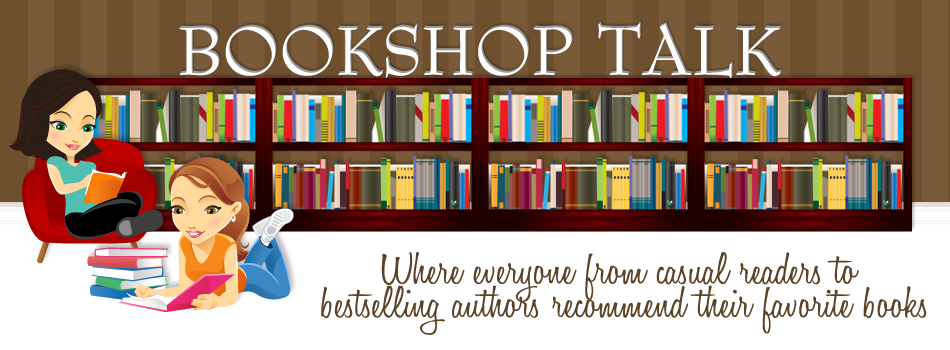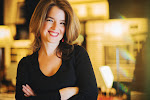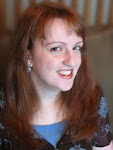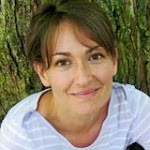There’s only one person who has ever truly understood fourteen-year-old June Elbus, and that’s her uncle, the renowned painter Finn Weiss. So when he dies, far too young, of a mysterious illness her mother can barely speak about, June’s world is turned upside down. But Finn’s death brings a surprise acquaintance into June’s life—someone who will help her to heal, and to question what she thinks she knows about Finn, her family, and even her own heart. (Amazon)
Reviewed by Julie, Children's Lit. enthusiast and pop culture geek
TELL THE WOLVES I'M HOME is a coming of age novel set in New York in 1987. When fourteen-year-old June Elbus learns that her uncle Finn, a famous artist, has died of AIDS, her grief is immeasurable. Uncle Finn has always been the only one who understands her, who values her unusual interests and social awkwardness. Without him, June is left virtually friendless: her older sister Greta bullies her, and her parents refuse to give her answers regarding Finn's mysterious illness. Then, one day, June receives her uncle's favorite teapot in the mail with an accompanying note . . . and a new friend and confidante steps into her life.
Carol Rifka Brunt has crafted a thoroughly engrossing, relatable, and bittersweet first novel. A coming of age story, Tell the Wolves I'm Home tackles many difficult issues, but manages to remain insightful and hopeful. Set in 1987, the novel and its characters feel transcendent, but the narrative reveals the decade's prejudices towards AIDS and homosexuality. Much of the mystery surrounding Finn's illness reflects the mysteries in June's family: Why is June's mother so reluctant to talk about Finn? Why did Finn insist on painting June's portrait weeks before his death? How did June's and Greta's once-strong relationship dissolve? Most importantly--who is the stranger who appeared at Finn's funeral? The story will keep you reading, but Brunt's gorgeous, lyrical language will make you want to take your time. Every word, every sentence flows beautifully and feels like poetry.
The characters are another high point of the novel. June, a teenage loner, is sensitive and interesting, an homage to anyone who just wants to feel loved and understood. Uncle Finn, portrayed with loving detail, appears largely in flashbacks but lights up every scene. June's affection for him, while complicated, feels relatable and moving. Even Greta, the older sister, proves to be appropriately complex and sympathetic despite her mean-girl ways. This novel would make a great read for anyone who loves to read about love, family dynamics, and the difficulties of growing up.
Market: upper YA/Adult realistic fiction
Language: mild
Sensuality: mild (first love feelings, quiet allusions to sex)
Violence: mild (one scene discusses a character's criminal past)
Mature Themes: Death and grief, AIDS/illness, family relationships, sexuality
August 28, 2014
August 26, 2014
EMILY'S DRESS AND OTHER MISSING THINGS by Kathryn Burak, 2012
When Claire’s best friend Richy went missing, he disappeared without a trace. But when Emily Dickinson’s dress goes missing from the Amherst museum, she knows exactly where it is: in her closet. As Claire and her student teacher, Tate, attempt to figure out what do to about the dress, they begin to uncover the truth behind Richy's disappearing act. Following a trail of clues across state lines, Claire and Tate attempt to find the person that Claire knows in her gut is responsible for his disappearance. (Amazon)
Julie, Children's Lit. enthusiast and pop culture geek
EMILY'S DRESS AND OTHER MISSING THINGS chronicles teenage Claire's attempts to come to grips with multiple losses. Having lost her mother to suicide years ago, Claire is now struggling with her best friend Richy's disappearance. She feels responsible for both losses and afraid to jinx anyone else she might befriend. Claire finds solace in the poetry of Emily Dickinson and, one night, one thing leads to another--and Claire accidentally steals the famous poet's dress from the Emily Dickinson House! With the help of Tate, her student teacher and friend, Claire must return the dress--and sort out all of the other missing parts of her life.
Suicide, disappearance, loss, and grief--too much for a single novel? Somehow Emily's Dress and Other Missing Things balances all of
these tough subjects without ever crossing into melodrama or after-school special territory. Even though college-bound Claire is YA
age, the narrative handles issues with such poignant sensitivity that
mature middle schoolers could read and enjoy the novel.
Intelligent and sympathetic, Claire will appeal to many readers, especially
young girls with ears for poetry.
High stakes mysteries thread themselves throughout the novel and
will make readers want to keep reading. The language in the
novel is subtle, but lovely. I can see how the writing style may
not appeal to everyone--especially those who balk at poetry. But Burak's
quiet lyricism made this Emily Dickinson fan read long after that
"certain slant of light" faded into dusk.
Market: upper middle grade or YA fiction
Language: none
Sensuality: none
Violence: references to suicide and death
Mature Themes: Death and grief, suicide, disappearance
August 20, 2014
“Authors I Can’t Write Without”: Guest Post by Author Teri Harman
I am a story addict. I am addicted to reading. It is my love
of reading that helped shape my love of writing. It’s symbiotic in some ways: I
suck all the greatness from my favorite writers, nourishing my ability to put
words on the page.
These are some of the authors that inspire me, that make me
want to try harder in my writing. That make me better.
1. Roald Dahl
Such imagination! Roald Dahl taught me to twist and turn the
normal into the bizarre. To stretch my creativity to mold ideas into stories
that feel fresh and yet familiar in all the right ways. Favorite titles:
‘Charlie and the Chocolate Factory,’ ‘Matilda,’ and ‘Tales of the Unexpected.’
2. Kate Morton
Beautiful, intoxicating words. Kate Morton’s writing is so
amazing – her descriptions, her solid plots, her gothic sense of place. I
devour her books and always want to run to the computer when I’m done. Favorite
titles: ‘The Forgotten Garden,’ and ‘The Secret Keeper.’
3. Sarah Addison
Allen
Sarah does steamy romance and magic realism so well. Her
books are magical and her characters authentic. I love her stories and want
mine to be as absorbing. Favorite titles: ‘The Sugar Queen,’ and ‘Garden
Spells.’
4. Sue Monk Kidd
The queen of emotional narratives that you never forget. I
want to write as honest and deep as Sue does. She captures characters and how
they feel in every situation so perfectly. That is not easy. Favorite titles:
‘The Secret Life of Bees’ and ‘The Invention of Wings.’
Which authors inspire you?
For more about Teri Harman and her books, including BLACK
MOON, the sequel to BLOOD MOON, which Kirkus Reviews calls ‘unusual and
absorbing,’ check out the links below…
Blog: http://www.teriharman.com/
Instagram: @teriharman
Goodreads: goodreads.com/TeriHarman
Facebook: http://www.facebook.com/AuthorTeriHarman
Twitter:
@TeriHarman, https://twitter.com/TeriHarman
August 19, 2014
Interview with Author Teri Harman
by Kim Thacker -- Writer, Mommy, Bookshop Talk Host
Interview with Author Teri Harman
I received a copy of BLOOD MOON, Teri Harman’s Young Adult/New
Adult paranormal romance novel, from its publisher shortly before the book
debuted last summer...and I was utterly bewitched by it (pun intended—it’s a
book about witches). I enjoyed the novel so much, that I requested the pleasure
of interviewing Teri on my personal website.
This September marks the release of BLACK MOON, the sequel to
BLOOD MOON. As part of Teri’s blog tour for BLACK MOON, she will join us on
Bookshop Talk on August 21st as a guest blogger, at which time she will
tell us all about writers and books that inspire her. In the meantime, and to
help you get to know Teri and her fabulous “Moonlight” series, here’s a re-post
of the interview I conducted with Teri last summer.
Kim Harris Thacker: BLOOD MOON is a wonderfully
romantic novel, but it is unique among love stories in that it begins with
the two lead characters falling into a
stars-aligning-souls-a-blazing-hearts-a-pounding love. Why did you choose to
begin your novel this way, instead of sticking with the more traditional (and,
unfortunately, somewhat cliché) method of bringing two lovers together near the
end of the book?
Teri Harman: I purposely went against
the cliché. I thought it would be interesting to avoid the normal
he-loves-me-he-love-me-not relationship drama and start with a strong bond. I
wanted Willa and Simon to be together from the start. Outside sources may
threaten their bond, but they will always fight to protect their love. Also, I
didn’t want the story to be about them coming together; it’s not really
a romance, although it is often romantic. I wanted it to be about
them discovering the magic as a couple, supporting one another.
KHT: In BLOOD MOON, all the witches have different
gifts that give them particular powers. Here’s how Wynter (a Light witch)
explains the Six Gifts to Simon and Willa (two new witches):
Every witch is born with a specific, dominant
talent or ability. There are six in all. The four elemental gifts: Earth, Air,
Water and Fire. And the two gifts connected to the Otherworld, or the world
beyond our own: Mind and Dreams.
If you could have any one of the Six Gifts Wynter lists in BLOOD
MOON, what would it be and why?
TH: I think I’d have to go with Willa’s
Gift of Dreams. I’ve always had vivid dreams and in fact a few of the scenes in
BLOOD MOON were inspired by the nighttime creations of my mind. It’d be so
interesting to see real events in dreams and talk to the spirits of the dead.
KHT: Speaking of Wynter, Simon, and Willa, how did
you come up with the names for your characters? They’re wonderful!
TH: Thanks! Names are critical; I take a
lot of time to pick the right ones. I’ve always loved the name Simon, so he was
easy. Willa was harder. At first, her name was actually something else –
Lynette, I think – and it totally did not work for the character that formed in
my head. So I started looking for something else. Willa struck me. It fits her
and it has ties to the willow tree in the books. Wynter’s name had to be
something unique. She’s an Earth witch so I wanted it to sound like someone
with strong ties to nature. I came across this name and it was perfect.
KHT: In BLOOD MOON, you jump from time period to time
period, visiting characters that, by the end of the story, are all integral
cogs in a complex, interconnected wheel. How do these time leaps serve your
story? Did you like writing in one particular time period more than another?
TH: I love stories that move between the
past and the present, that have a symbiotic relationship between what’s
happening now and what happened then. Also, witches have a rich and long
history – I wanted to honor that in this story.
It’s easier for me to write in the past. Maybe
it’s because of my obsession with period dramas. It wasn’t always
easy to switch between the two, but it was really interesting.
KHT: Who is your favorite heroic character in BLOOD
MOON and why? Who is your favorite villain and why?
TH: It’s nearly impossible for me to
pick between Willa and Simon – it’s their joint story – but I suppose I have a
soft spot for Simon. His back story is so tragic and he’s struggled so much.
He’s easy to root for.
Archard is the main villain in BLOOD MOON, but
my favorite is Bartholomew. He has a small role in this book, but a big one in
BLACK MOON, book 2.
KHT: On your website, you have links to your
Pinterest boards for your books. How does having a collection of images inspire
you? Or is it just for fun?
TH: It helps me with visuals and
descriptions, but I did it mainly for readers. I wanted readers to be able to
check out the boards and experience more details, more visuals for the book.
It’s also just fun.
KHT: BLOOD MOON is the first book in “The Moonlight
Trilogy.” What can you tell us about the other, forthcoming books?
TH: Book 2 throws into question
everything that happened in book 1. Evil abounds in expected and unexpected
places. Simon struggles the most as his powers grow out of control. The ending
is a killer! Book 3 is still up in the air. I need to make some serious
decisions about what will happen.
KHT: I’m from a small town just south of Jackson
Hole, Wyoming, which is one of the settings of BLOOD MOON. Does this mean I
might be part witch? Just kidding. What I meant to say is, in
your book, you mention that magical abilities are generally inherited. Does
this mean we’ll learn more about Willa’s and Simon’s parents in future books?
TH: Hmm. That has yet to occur, but it’s
a great idea!!
KHT: You will publish a work of literary fiction,
entitled A PAINTED LIFE, in 2014. Here’s the synopsis, from your website:
Saffron is a painting. Brought to life,
unknowingly, by the hand of the artist, she is color on canvas, but she is also
so much more. From her prim white chair, surrounded by sunflowers, pretty
Saffron watches the world move beyond the edges of her silver frame.
At the beginning it is only her eyes that can
move, but as her story progresses so do her abilities. A finger that twitches,
tears that stream down her canvas, her heart suddenly bursting into rhythm.
These miraculous, but confusing changes bring thoughts of life beyond her
frame. Thoughts that over time become more of a torture than a pleasure.
As mysterious as her ability to be alive, is
the way her various owners talk about her, the way they look at her. Especially
the way Mr. Emmett Charles looks at her. This handsome, complicated stranger, a
cotton mill owner and an elite of late nineteenth century Boston society, looks
at her with a layered sadness that only makes her wish for more things she
cannot possibly have or become.
Saffron tries to resolve herself to life as a
painting. But what happens when a dream won’t die? She wants more, but can she
dare to reach for a real life beyond her frame, a life with Emmett?
Brimming with blissful romance, intriguing
magic realism and curious mystery, A Painted Life, is a refreshingly unique
novel about reaching beyond our frames and having the endurance to follow a
dream.
KHT: This sounds so romantic and intriguing! How was your writing
experience for this book different from that of BLOOD MOON?
TH: It was very different! A PAINTED
LIFE is told in first person and chronologically. Plus, it’s such a different
story. I loved writing this book soo much. Saffron’s journey is so close to my
heart. I can’t wait to hear what readers think.
KHT: You’ve been writing articles about books for a
while, now. How is article writing different from novel writing? Is it the same
in any way?
TH: Article writing is brief, to the
point. There are few flourishes; it’s all about facts and quick-access
information. Novels are ALL about the details, about getting into the deep
layers of things. It’s so much more interesting and so much more fun. However,
writing articles and learning to be concise has helped me write better when I
write novels. It’s helped me pull back when I tend to go overboard.
KHT: On your website, you mention that you are a
stay-at-home mom. How do you balance being a mom with being a professional
writer?
TH: Haha! Well, it’s pretty much chaos
all the time. I am constantly interrupted while I work, it’s rarely
quiet, but I gets things done. I’ve trained myself to still be productive while
every day life is happening (most the time anyway). It also really helps to
have a consistent schedule, so the kids know when it’s time for mommy to work
and when we can play or read books. They are good kids too (most the time ). Plus I have a wonderful husband who helps
a lot.
KHT: Tell us a little bit about your recent book
launch party at The King’s English. How did you feel, standing in front of
everyone to talk about your very own book?
TH: It was so emotional. I started
crying the moment everyone started clapping for me to come up to speak. I’d
dreamed of that moment so many times over the last 6 years. Standing there and
seeing my book in people’s hands was like standing inside a dream. It was
blissful and felt so exactly right. What an incredible night!
KHT: What is one piece of advice that you can give to
aspiring writers?
TH: Three words: Persistence, hope and
hard work. Those three things can get you anywhere.
Thank you so much for joining us today, Teri! I wish you the
very best in all you do, and I look forward to reading more of your work!
You can learn more about Teri by clicking on these links: Teri
on Facebook, Teri on
Twitter, Teri’s Website.
Subscribe to:
Posts (Atom)

























